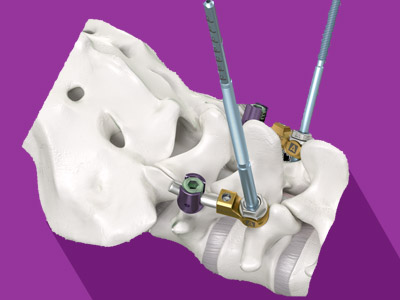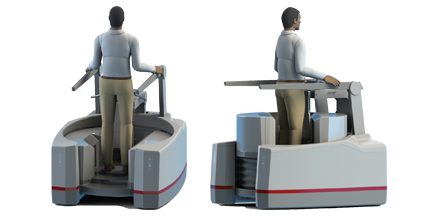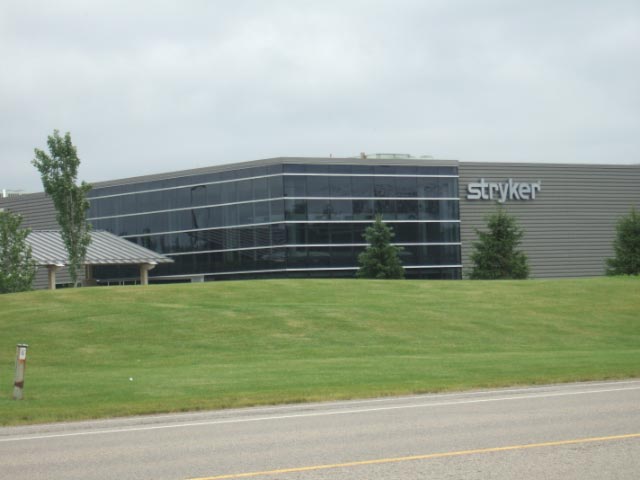(DANBURY, CT) – September 9, 2016 – When his knee quickly swelled to three times its normal size after falling on the stairs, Nicholas Saccone of Carmel, NY knew something was seriously wrong. Saccone, 69, wasn’t able to walk or bend his knee and pain radiated throughout his leg. He immediately contacted Dr. Daniel Fish, a surgeon with Orthopaedic Specialists of Connecticut who had performed previous meniscus surgery on him.
An MRI and X-ray revealed that Saccone had arthritis and had also developed a stress fracture of the knee, but instead of a full knee replacement, Dr. Fish suggested a relatively new procedure called Subchondroplasty. Dr. Fish and two other doctors with Western Connecticut Health Network (WCHN) are among only a handful of surgeons in Connecticut trained to use this revolutionary technique.
“This procedure is ideal for patients with knee pain and decreased joint function caused by small cracks or stress fractures,” explained Dr. Fish. “We inject a calcium phosphate compound that seals the crack, similar to caulking.”
Specifically, surgeons use an injectable, bone graft substitute material called AccuFill® that is intended to fill voids or gaps in the skeletal system. It flows readily to fill bone defects, then crystallizes and sets to form a scaffold in the bone. The compound promotes new bone growth and is naturally replaced with the new bone during the healing process. The FDA approved the material in 2010.
According to the Centers for Disease Control and Prevention (CDC), 719,000 Americans had a full knee replacement in 2010. That same year, the National Center for Health Statistics released a report that shows hospitalization rates for knee replacements more than doubled over a ten year period for adults aged 55-64.
Dr. Fish and his partner Dr. Robert Daher, and colleague Dr. Matthew Rogell, have offered the procedure for the past two years.
“Before Subchondroplasty, there were limited treatment options for this type of injury,” said Dr. Rogell. “Often the only treatment option for patients in significant pain was a more invasive knee replacement.”
For Saccone, his operation was performed at 7:00 a.m. and by noon he was back in his home and able to move around.
“On just the fourth day after my surgery, I was walking without a cane. I couldn’t believe it.” Saccone said. Eight months later, Saccone remains very active, walking 1 ½ miles per day. He just returned from a trip to Atlantic City where he easily walked up and down the boardwalk.
The minimally invasive surgery is a 30-minute outpatient procedure performed under regional anesthesia, so the patient remains awake. The knee can be quite uncomfortable for 24-48 hours after the procedure, but then the pain resolves rapidly. Patients are on crutches for three to five days postoperatively. Most see a complete recovery in four to six weeks.
“Studies have indicated that the benefits can last for more than five years,” Dr. Fish said. “Additionally, this procedure will not limit treatment options for a partial or full joint replacement further down the road if needed.”
Dr. Fish is an examiner for the American Board of Orthopedic Surgery as well as an editorial reviewer for The Journal of Bone & Joint Surgery and the American Journal of Sports Medicine.
“Reviewing the latest research for publication in national orthopedic journals,” he said, “allows me to stay current while evaluating the risks and benefits of new technologies.” Dr. Fish has not yet performed the Subchondroplasty procedure on other weight-bearing joints such as the hip or ankle but he said the potential exists.
Dr. Fish and Dr. Daher are partners at Orthopedic Specialists of Connecticut, based in Brookfield, CT. They both reside in Ridgefield, CT. Learn more by visiting www.ctorthopaedic.com. Dr. Rogell is a partner with Connecticut Family Orthopedics based in Danbury. He resides in Redding, CT. For more information about Dr. Rogell, contact www.cfortho.org.
Western Connecticut Health Network (WCHN) is the region’s premier, patient-centred health care organization built for the people we serve in Western Connecticut and adjacent New York. WCHN is anchored by three nationally recognized hospitals, Danbury Hospital, New Milford Hospital and Norwalk Hospital, with the continuum of outpatient health and wellness services offered by numerous medical practices and sub-specialties across the region through the Western Connecticut Medical Group, the Western Connecticut Home Care. Committed to learning and innovation, our hospitals collaborate with the University of Vermont Medical College and many other well-known academic institutions to promote the most progressive care possible. The nationally renowned WCHN Research Institute, the WCHN Foundation and Norwalk Hospital Foundation and other affiliates complete the WCHN family where We Know You Well! For more information, visit TheNewWCHN.org. Share your comments with us at Facebook.com/DanburyHospital; Facebook.com/NewMilfordHospital and/or Facebook.com/NorwalkHospital.








